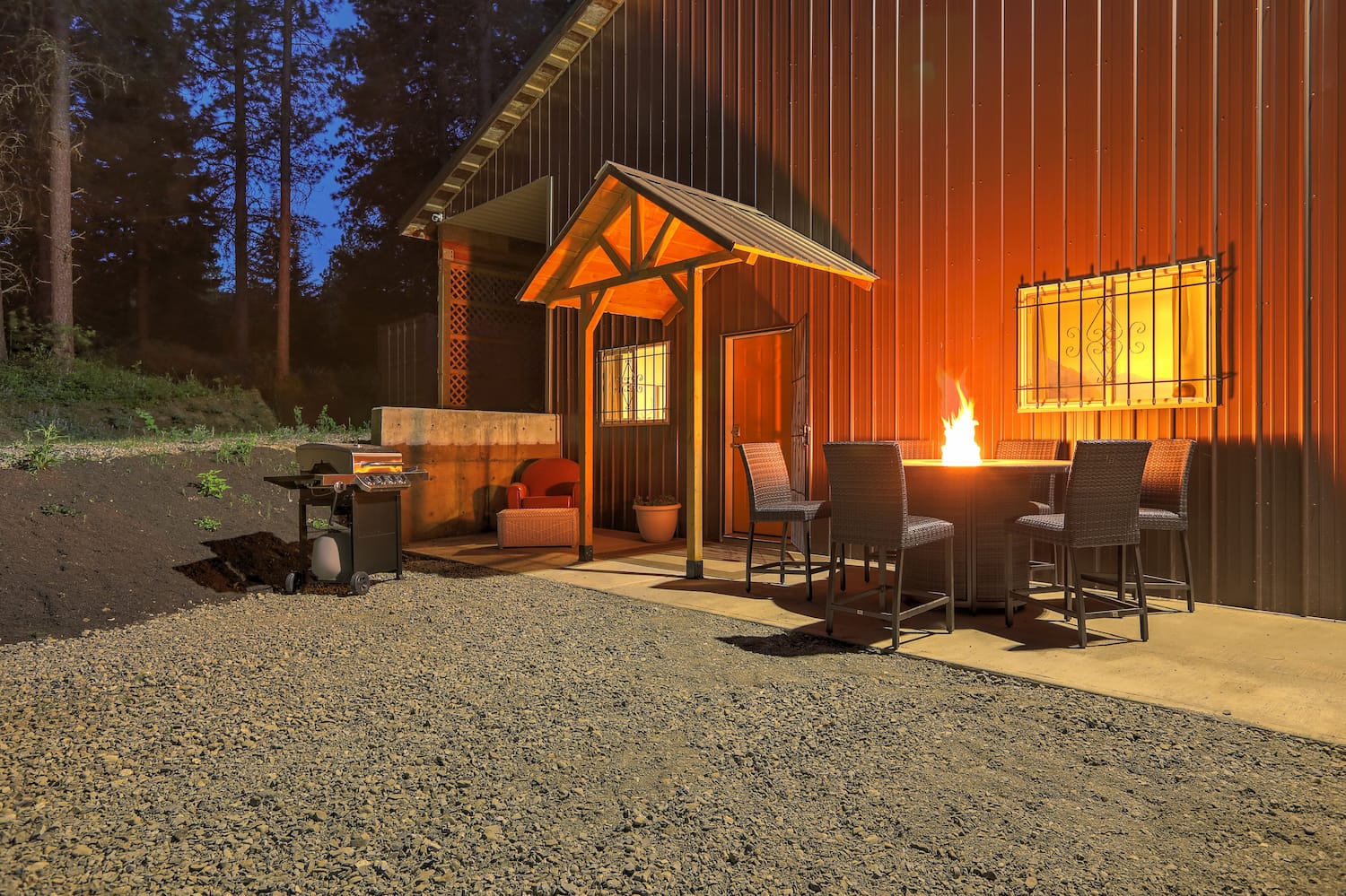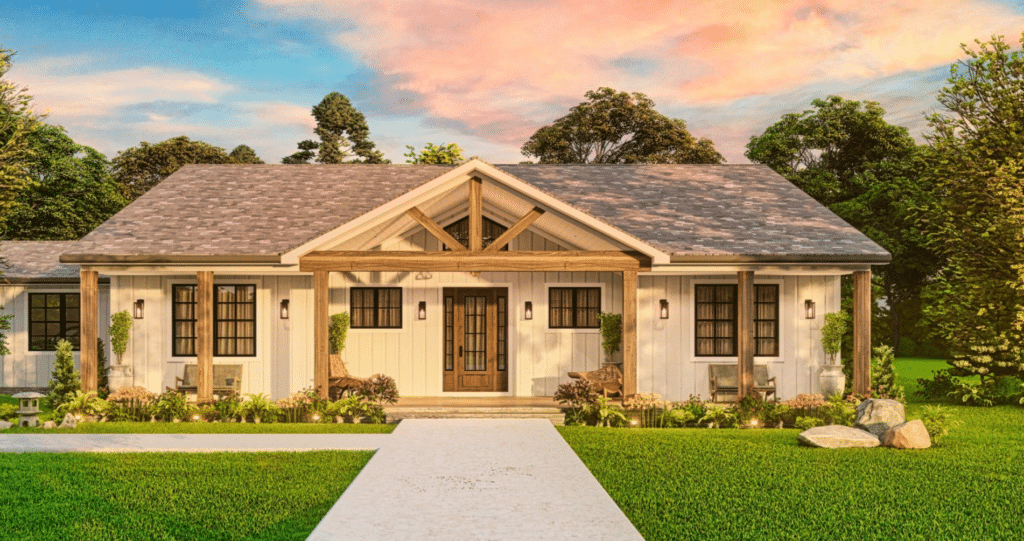Barndominiums Vs. Typical Houses: a Thorough Contrast of Way Of Living and Functionality
The decision in between barndominiums and conventional homes includes various aspects, consisting of way of living preferences and useful requirements. Barndominiums are defined by their open formats and versatility, frequently attracting those that focus on common living and flexibility. In contrast, traditional homes offer an even more organized environment, which may better offer families looking for personal privacy and a feeling of history. As we examine the price implications and ecological factors to consider, it becomes clear that the selection prolongs beyond mere appearances and capability; it welcomes a deeper exploration of what really specifies a home.
Summary of Barndominiums
Barndominiums, a novel housing pattern obtaining appeal across different areas, blend the rustic charm of barn-style design with the capability of contemporary space. These unique frameworks generally contain a metal or timber structure, incorporating open layout and high ceilings with energy-efficient functions. Often situated on expansive country homes, barndominiums use home owners the chance to appreciate a calm way of living while offering adequate room for different activities.
The adaptability of barndominiums prolongs beyond their visual allure; they can offer as both living quarters and useful rooms for leisure activities, workshops, and even small services. Their adaptive layout permits very easy personalization, accommodating diverse family demands and choices. Numerous owners value the reduced upkeep demands associated with metal exterior siding and roofing, adding to long-term sturdiness.

Features of Standard Homes
Highlighting timeless layout and comfort, conventional homes are defined by their distinct building styles, which often reflect historical impacts and regional visual appeals. Typical attributes consist of balanced facades, gabled roof coverings, and a focus on craftsmanship, causing a cozy and welcoming atmosphere.
Traditional homes frequently integrate elements such as crown molding, wainscoting, and wood flooring, improving their traditional charm. They usually include multiple rooms with defined functions, promoting family communication while enabling personal privacy. website. The design frequently consists of official living and eating areas, which are conducive to entertaining guests and hosting household celebrations
Exterior products such as brick, wood, or rock are frequently made use of, adding to sturdiness and a feeling of permanence. Barndominium builder. In addition, lots of typical homes are developed with front porches or stoops, fostering a feeling of neighborhood and connection with the area
Landscaping plays a substantial role in standard home layout, with well-maintained gardens and paths that enhance aesthetic charm - learn more. Overall, traditional homes embody a sense of nostalgia and security, interesting those who value heritage and an extra structured living environment
Cost Contrast
Typically, an expense comparison between barndominiums and standard homes discloses significant differences in building expenditures and total investment. Barndominiums, frequently constructed from metal or steel structures, generally sustain lower material and labor expenses than traditional homes constructed from wood and brick. The simplified design of barndominiums can convert to reduced building and construction times, even more lowering labor prices and accelerating tenancy.
Typically, the expense per square foot for a barndominium varies from $100 to $150, while typical homes can vary commonly, usually dropping between $150 and $300 per square foot, depending upon place, products, and layout complexity. This expense variation makes barndominiums an appealing option for budget-conscious buyers seeking bigger space without giving up quality.
Furthermore, barndominiums might result in lasting financial savings through lower maintenance costs, power effectiveness, and insurance coverage prices. Their resilient building products commonly call for less upkeep over time compared to conventional homes. It is vital to think about that while first costs might be lower for barndominiums, the last financial investment will certainly additionally depend on private personalization and preferred services, which can influence the general cost in both real estate kinds.
Lifestyle and Space Factors To Consider
When thinking about way of life and space, barndominiums provide a special versatility that attract a variety of home owners. These hybrid frameworks incorporate domestic living with useful space, usually featuring open flooring strategies that can be adjusted to suit specific demands. This flexibility is specifically advantageous for families or individuals seeking a customized living environment, permitting for varied uses such as home offices, workshops, or entertainment locations.

In addition, the visual appeal of barndominiums can deal with both rustic and contemporary preferences, making them a versatile choice for different layout choices (Barndominium repair). Eventually, the option in between a barndominium and a conventional home usually depends upon just how well each option straightens with the homeowner's way of life ambitions and spatial demands, highlighting the relevance of taking into consideration individual concerns in the decision-making process
Environmental Impact and Sustainability
The ecological influence and sustainability of barndominiums present engaging advantages compared to conventional homes. Mainly constructed from steel and other long lasting products, barndominiums are often built making use of recycled sources, lowering the demand for brand-new products and lessening waste. Their layout normally stresses open rooms, which can lead to reduced power usage for heating & cooling compared to typical homes with even more fractional formats.
In addition, barndominiums can include lasting attributes such as photovoltaic panels, rain harvesting systems, and advanced insulation strategies, enhancing their energy efficiency. The convenience of their design allows home owners to incorporate these technologies much more flawlessly than in lots of traditional homes, which might need comprehensive retrofitting.
Furthermore, barndominiums usually call for less resources for construction as a result of their less complex, extra effective designs. This not only reduces the carbon footprint connected with structure yet also contributes to an extra sustainable way of living. In contrast, traditional homes might entail higher degrees of power expenditure and source make use of throughout their this content lifecycle, from building and construction to upkeep. Generally, barndominiums represent a forward-thinking technique to sustainable living, aligning with modern ecological top priorities.
Verdict
In recap, the selection between barndominiums and standard homes pivots on individual way of living preferences and useful needs. Barndominiums, with their open formats and lasting materials, provide to those seeking flexibility and communal living.